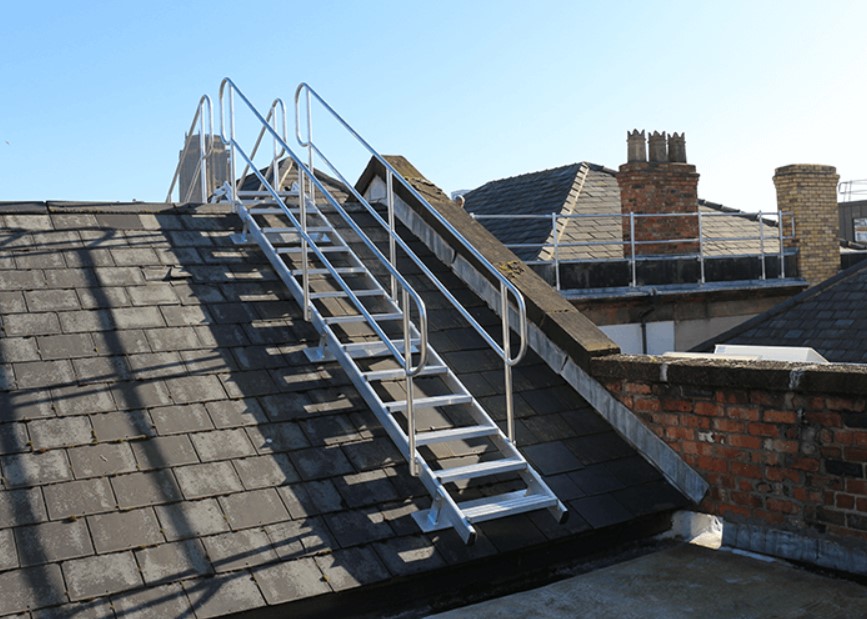

In the world of industrial and commercial settings, efficient access to elevated areas is paramount. Whether it’s gaining access to mezzanine levels, elevated platforms, or rooftops, a reliable and safe ladder system is crucial. Among the array of ladder designs available, a ships ladder stands out as a versatile and practical choice, offering a balance between functionality, space efficiency, and safety.
Defining Ships Ladders:
Ships ladders, also known as ship’s stairs or companionway ladders, are a specialized type of ladder specifically designed for spaces where traditional staircases might be impractical due to space constraints. These ladders derive their name from their common use on ships, where space optimization is essential. Ships ladders are typically steeper than standard stairs and are constructed with a fixed incline that provides a comfortable angle for climbing while maximizing vertical space.
Space Efficiency:
One of the primary advantages of ships ladders is their ability to optimize space. With a steep angle of ascent, ships ladders require less horizontal space compared to traditional staircases, making them an ideal choice for environments with limited room. These ladders are often employed in industrial facilities, warehouses, factories, and commercial buildings where maximizing usable floor space is a priority.
Variety of Applications:
Ships ladders have found their place in various settings due to their versatility. Whether it’s providing access to machinery, reaching storage areas, or facilitating maintenance tasks, ships ladders can be customized to meet specific requirements. Their compact design makes them adaptable to a range of vertical access needs, and they can be installed both indoors and outdoors, depending on the environment and purpose.
Material and Construction:
Ships ladders are commonly constructed from durable materials such as aluminum or steel, ensuring longevity and strength. These materials also contribute to the ladder’s ability to withstand heavy usage and exposure to the elements. The treads or steps of ships ladders are designed to provide a secure foothold, often featuring non-slip surfaces to enhance safety during ascent and descent.
Safety Considerations:
Safety is of paramount importance when designing and installing ships ladders. Because of their steeper incline, ships ladders are equipped with safety features to ensure users’ well-being. Handrails or guardrails along both sides of the ladder provide essential support and balance. These safety enhancements not only prevent falls but also instill confidence in users, encouraging them to utilize the ladder with peace of mind.
Compliance with Regulations:
When installing ships ladders, adherence to safety regulations and building codes is essential. Regulations may stipulate specific dimensions, handrail heights, and other safety features to ensure that the ladder provides secure access without compromising the well-being of users. Compliance with these guidelines is vital for maintaining a safe work environment and avoiding potential legal issues.
Ships ladders stand as a testament to the innovation and adaptability present in modern access solutions. Their space-saving design, versatility, and attention to safety make them an excellent choice for industries and spaces where efficient vertical access is a priority. From industrial facilities to commercial buildings, ships ladders offer a reliable means of navigating heights while optimizing available space, underscoring their significance in enhancing efficiency and safety across various environments.







